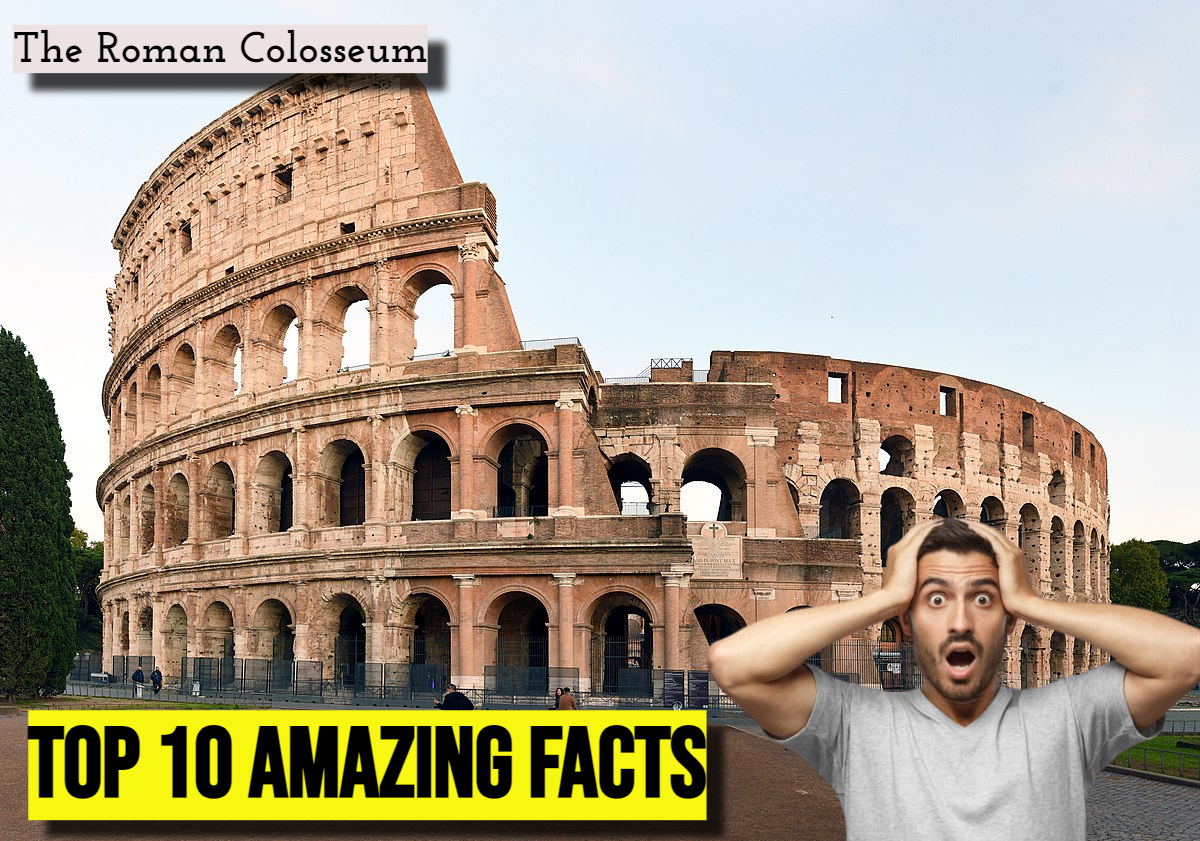The Roman Colosseum, also known as the Flavian Amphitheatre, is an iconic symbol of ancient Rome and one of the most famous landmarks in Italy. Here are the top 10 amazing facts about the Colosseum:

- Construction and Completion: The Colosseum was commissioned by Emperor Vespasian of the Flavian dynasty in AD 70–72 and was completed in AD 80 under his successor, Emperor Titus.
- Giant Amphitheatre: It is the largest ancient amphitheater ever built, capable of seating approximately 50,000 to 80,000 spectators, depending on the estimates.
- Architectural Innovation: The Colosseum’s design is a marvel of ancient engineering. It consists of three tiers of arched entrances, supported by semi-circular columns, and features a complex system of ramps and corridors for efficient crowd movement.
- Gladiatorial Contests: The Colosseum was primarily used for gladiatorial contests, animal hunts, mock sea battles, and other public spectacles, providing entertainment for the Roman populace.
- Hypogeum: Beneath the arena floor lies the hypogeum, a vast network of tunnels and chambers where gladiators, animals, and props were kept before their performances. It also housed mechanisms for raising and lowering stage sets and animals into the arena.
- Symbol of Roman Engineering: The Colosseum stands as a testament to Roman engineering prowess, showcasing advanced techniques in concrete construction, arches, and stadium design.
- Historic Events: Many historic events took place at the Colosseum, including the inaugural games held by Emperor Titus in AD 80, which lasted for 100 days and featured gladiatorial combats and wild animal hunts.
- Fall and Restoration: Over the centuries, the Colosseum suffered damage from earthquakes, fires, and stone-robbers. However, it has undergone extensive restoration efforts, particularly in the 20th and 21st centuries, to preserve its iconic structure.
- Symbol of Endurance: Despite its tumultuous history, the Colosseum remains standing as a symbol of endurance and resilience, representing the grandeur and might of ancient Rome.
- Cultural Legacy: Today, the Colosseum is one of Rome’s most popular tourist attractions, drawing millions of visitors each year. It has also inspired numerous works of art, literature, and film, solidifying its place as an enduring symbol of Roman civilization.
The Colosseum continues to fascinate and awe visitors with its grandeur and historical significance, serving as a timeless reminder of Rome’s rich cultural heritage.




